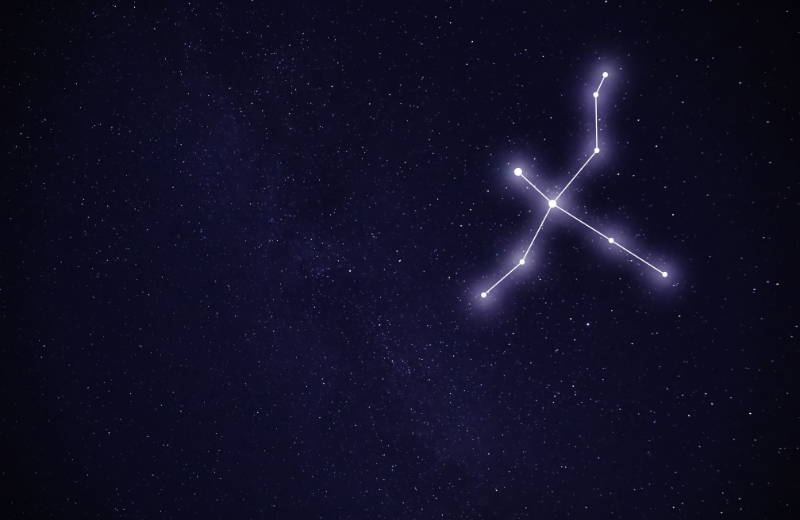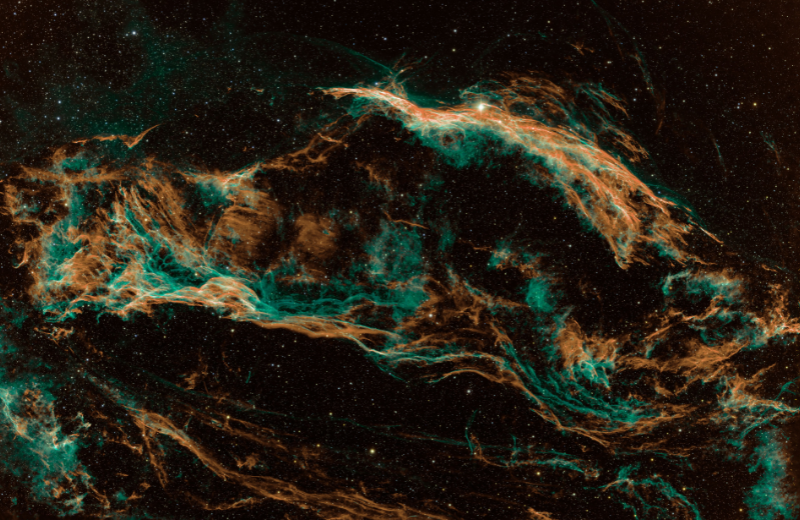Cygnus, often called the Swan, is one of the most remarkable constellations in the night sky. This guide explores what makes Cygnus special, its mythological background, and its notable stars and nebule.
Jump to:
Recommended for you!
Best SellersWhat is the Cygnus Constellation?
The Cygnus constellation is one of the most recognisable star patterns in the northern hemisphere, especially during the summer months. Named after the Latin word for swan, "Cygnus," the constellation is said to resemble the graceful bird in flight. Its long wings and outstretched neck make it relatively easy to spot among the stars.
The constellation is part of the 88 modern constellations recognised by astronomers, and it holds a special place in the night sky due to its prominent stars and fascinating mythological associations. Cygnus is also home to one of the most famous stars in the sky, Deneb, which marks the tail of the swan.
What Does Cygnus Look Like?

When you gaze up at the sky, Cygnus appears as a cross or 'T' shape. Its brightest star, Deneb, marks the tail, while other stars, such as Albireo, form the head of the swan. The stars in Cygnus stretch out, creating a structure that resembles wings in flight. This visual association is what makes it easy to see why it's called the Swan constellation.
How Far is the Cygnus Constellation from Earth?
Cygnus is relatively far from Earth, but that depends on which star you’re focusing on. Deneb, for instance, is around 2,600 light-years away, making it one of the farthest bright stars visible to the naked eye. Some of the other stars in Cygnus, such as Albireo, are much closer at about 430 light-years away.
Despite these vast distances, Cygnus is one of the easiest constellations to observe, even without a telescope. Its stars, especially Deneb, shine brightly enough to be seen from most locations with little light pollution.
The Cygnus Constellation Myth

Cygnus has been associated with several myths, but the most well-known is its connection to the hero Phaethon in Greek mythology. According to the story, Phaethon attempted to drive the sun chariot but lost control, causing the earth to overheat. Zeus, in his wisdom, struck him down with a thunderbolt, and Phaethon fell into the river Eridanus. Grief-stricken, Cygnus transformed into a swan to search for his friend’s remains, and the gods honoured his loyalty by placing him among the stars.
Another version of the Cygnus myth involves Zeus himself. In this story, Zeus transformed into a swan to seduce Leda, a mortal queen. This myth gave rise to one of the most famous mythological pairings in Greek lore, and Cygnus continues to remind us of these rich stories that connect the heavens with our history.
Cygnus's Stars
The constellation Cygnus contains several remarkable stars, with four standing out:
- Deneb: The brightest star in Cygnus, located at the tail of the swan. It is a blue-white supergiant and one of the most luminous stars in the sky, shining brightly despite being around 2,600 light-years from Earth. Deneb also forms a key part of the Summer Triangle.
- Albireo: A stunning double star at the swan’s head. Albireo's two components provide a beautiful colour contrast, with one star appearing golden and the other blue when viewed through a telescope. It lies approximately 430 light-years from Earth.
- Sadr: Positioned at the heart of the swan, Sadr is another prominent star in the Cygnus constellation. It serves as a central point in the formation, located around 1,800 light-years from Earth.
- Gienah: This star marks one of Cygnus's wings and is another important part of the constellation’s structure, adding to the beauty of the swan's shape in the sky.
Nebulae in the Cygnus Constellation

Cygnus is not just known for its stars but also for its beautiful nebulae. The most famous is the Cygnus Loop, a large supernova remnant that lies about 1,500 light-years away. It’s an awe-inspiring sight for those with telescopes and is believed to be the result of a star that exploded thousands of years ago.
Another stunning feature is the North America Nebula, so named because of its resemblance to the continent when viewed through telescopes. This nebula is an active star-forming region, and it lies close to Deneb in the sky.
Finding Cygnus in the Sky
To observe the Cygnus constellation, it’s best to stargaze in the northern hemisphere between June and September, as this is when the Swan constellation is most visible. Cygnus lies along the Milky Way, making it a beautiful feature of the summer night sky.
Locating Cygnus
Start by looking for Deneb, one of the brightest stars in the sky, which marks the tail of the swan. Once you’ve spotted Deneb, you can trace the rest of Cygnus by following the long cross-like shape it forms, resembling a swan in flight.
If you're new to stargazing, finding the Summer Triangle is a useful guide. This triangle is made up of three bright stars: Deneb, Altair, and Vega. Deneb is your key to locating Cygnus, as it's one of the points of the Summer Triangle. In clear, dark skies, Cygnus is relatively easy to identify thanks to its distinct shape and bright stars.
Using Binoculars or a Telescope
With binoculars, you can more clearly define the stars that make up Cygnus, especially its famous double star, Albireo. If you have access to a telescope, you’ll be able to observe Cygnus’s stars in more detail and even catch a glimpse of the beautiful nebulae within the constellation.
Best Viewing Conditions
For the best viewing experience, find a location away from city lights on a clear, moonless night. The darker the sky, the easier it is to appreciate the full structure of Cygnus, with its wings outstretched and tail pointing toward the Milky Way. Cygnus is truly mesmerising when seen in ideal conditions.
Recommended for you!
Best SellersFun Facts About Cygnus
- Cygnus hosts a black hole: One of the most fascinating objects in Cygnus is Cygnus X-1, a famous black hole that was one of the first to be discovered. It’s part of a binary star system, and its existence has helped scientists understand more about the life cycles of massive stars.
- The Cygnus constellation is home to a bubble: The Cygnus Bubble is a vast cloud of gas that has been shaped by strong winds from nearby stars. It’s another feature that makes this constellation unique in the night sky.
- The indigenous story of Cygnus: In some Native American cultures, Cygnus is seen as a bird that flies along the Milky Way, guiding souls to the afterlife. This is yet another example of how Cygnus has captured the human imagination for centuries.
Study Astronomy for £29
If the Cygnus constellation has sparked your curiosity, why not explore more about the stars and the cosmos with our Astronomy Diploma Course at Centre of Excellence? This course offers you a detailed understanding of the universe, from constellations and star types to the fundamentals of space observation. Perfect for all budding astronomers, the course is available for a discounted price of £29.













